The leopard and jaguar's colour, fur print and built might look similar, but the two are actually quite different. Here are some differences that will help you tell them apart!
Comparing leopards vs jaguars can be tricky, as both these cats have black spots and belong to the genus Panthera under the family Felidae. Like all other big cats, leopards and jaguars are both elegant and powerful. Their sharp claws and keen eyes make them vigorous hunters.
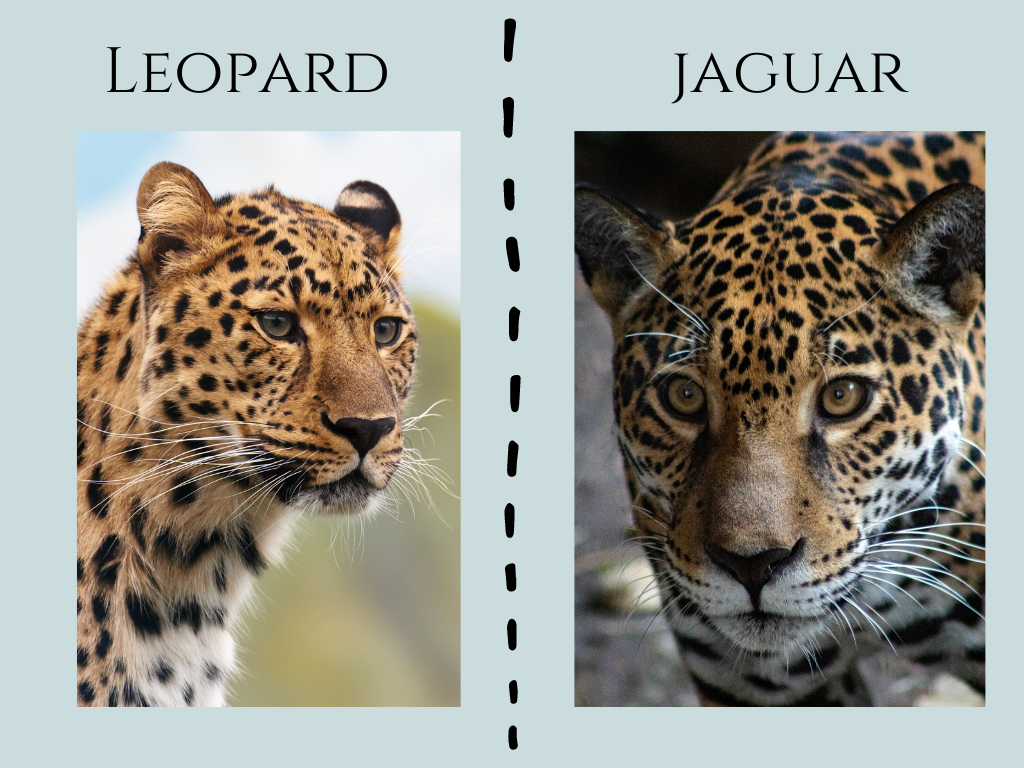
leopard and jaguar - a comparison
Animal watchers, however, can often get confused between the two and can mistake one for another. A quick glance through this comparison between jaguars and leopards will help you differentiate the animals better. The difference between leopards and jaguars can be mainly observed in their physical characteristics, but they also differ in habitat and behaviour. Let’s see how.
Geographic Distribution and Habitat-
Of all the big cats, leopards and its subspecies have the most extensive distribution across the world. Extant leopards can be found in over 70 countries of sub-Saharan Africa, northeast Africa, Caucasus, Central Asia, and the Indian subcontinent. The leopards are found in all types of forests as well as mixed woodland-grassland ecosystems.
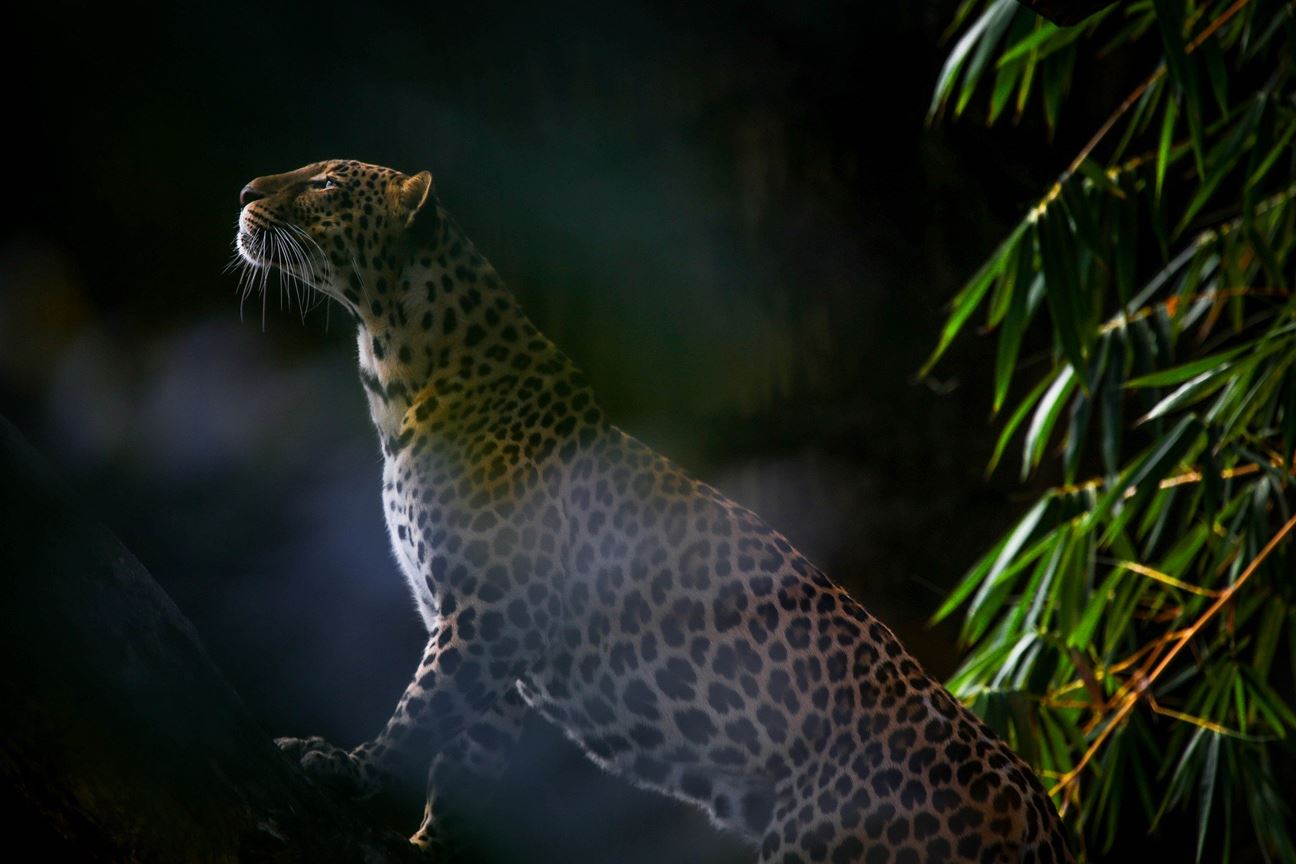
A leopard
The jaguars are mostly found in the Americas. The montane tropical rain forests of South and Central America and its densely covered lowlands are a perfect habitat for the jaguars.
Now let us look at the difference between leopard and panther based on their physical characteristics -
Jaguar v/s leopard body built and weight -
The leopard, or the Panthera pardus, is smaller and thinner on an average. Their physiques are slender, with long bodies and comparatively leaner legs. These cats are large and extremely powerful.
| | Male | Female |
Body Weight | 38-88 kgs | 28-58 kgs |
Body Length | 3.0 to 6.0 ft | 3.0 to 6.0 ft |
Tail Length | 2.0 to 3.5 ft | 1.8 to 3.2 ft |
The jaguar, or the Panthera Onca, is heavier and wider across the shoulder and chest. Their bodies are robust and their legs shorter, relative to all pantherine cats. Jaguars have a broader head, larger paws, and a shorter tail compared to leopards.
| | Male | Female |
Body Weight | 60-115 kgs | 58-105 kgs |
Body Length | 3.8 to 6.1 ft | 3.8 to 6.1 ft |
Tail Length | 1.5 to 2.4 ft | 1.5 to 2.4 ft |
Spots -
Both the cats have lovely packed rosette patterned spots. But they are a bit different from one another.
The coat of leopards is soft with long and dense hair, and its colour varies. Their spots are placed in a plain and loosely-packed rosette pattern, or round grouping, that can be found all over the body, including legs, under-belly, throat, and tail. Large black spots are found on the feet and small black spots are found on their face and neck.
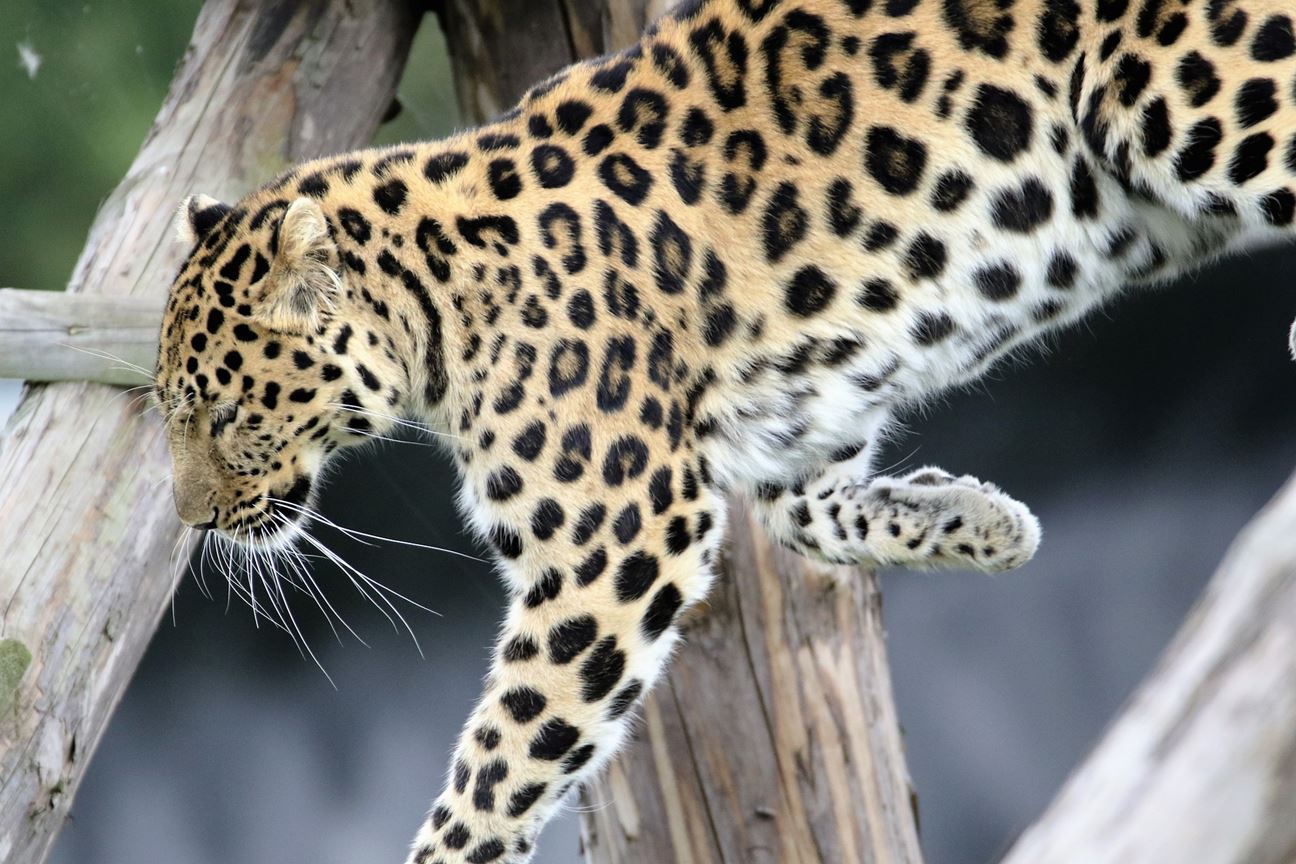
loosely packed leopard spots
The jaguar’s rosette patterned spots are larger, with a solid black spot in the centre — almost like a butterfly!
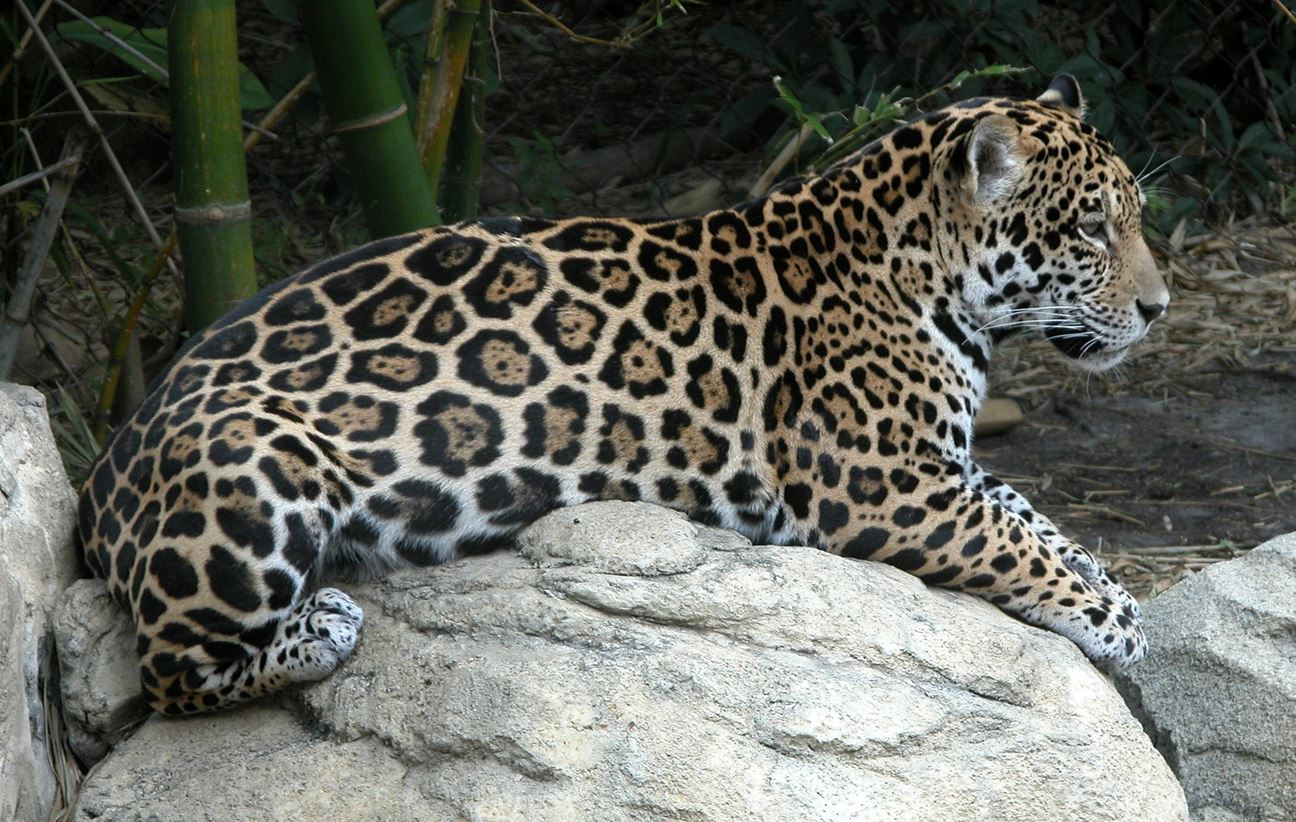 jaguar spots - with a solid black spot in the centre
jaguar spots - with a solid black spot in the centre
Facial characteristics -
The size of a leopard's head is smaller than that of the jaguar because of the difference in their killing styles.
A jaguar’s head is massive, with a larger forehead and wider jaws. Their head circumference is greater than the shoulder.
The leopard’s eyes are usually yellow-green, and their ears are short and rounded while a jaguar’s eyes have round pupils and the colours of the iris range from golden to reddish-yellow. Jaguar’s ears are small and rounded as well.
Leopard’s canine teeth are sharp and made for cutting through the meat. Their roots are large, which minimises breakage, thus aiding a leopard to carry its prey on top of a tree. A jaguar’s lower canines are comparatively larger, which makes for a powerful, piercing bite.
Tree climbing -
When it comes to climbing, leopards are the best climbers amongst the two. They are arboreal and hence spend most of their time on the trees. And their long tails help them balance and climb better. Leopards usually carry their kill high up the tree because of the presence of other predators like hyenas, tigers, and more.
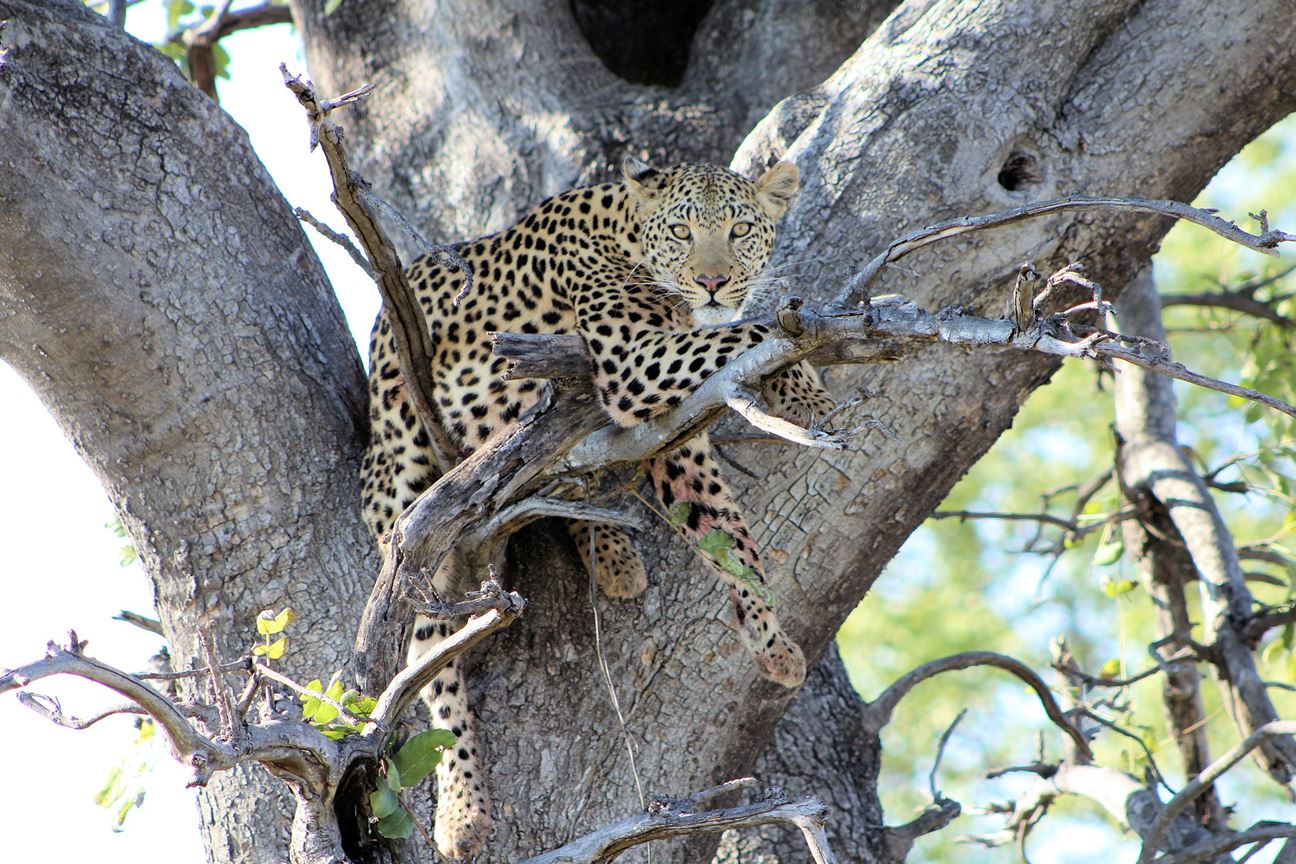 A leopard resting on a tree
A leopard resting on a tree
On the other hand, Jaguars being the top predators, usually go for larger prey. The larger prey is difficult to carry up the tree. They are not very interested in climbing trees (their shorter tails are an indicator of this) unless preparing for an ambush. Jaguars do not hide their prey.
Movement and Speed -
Both cat species walk quadrupedally. The leopards with their tails down and end slightly up; and jaguars with their tails upwards.
When it comes to swimming in water, leopards, though great swimmers, typically avoid water. Jaguars, on the other hand, swim frequently, with their heads held out of the water.
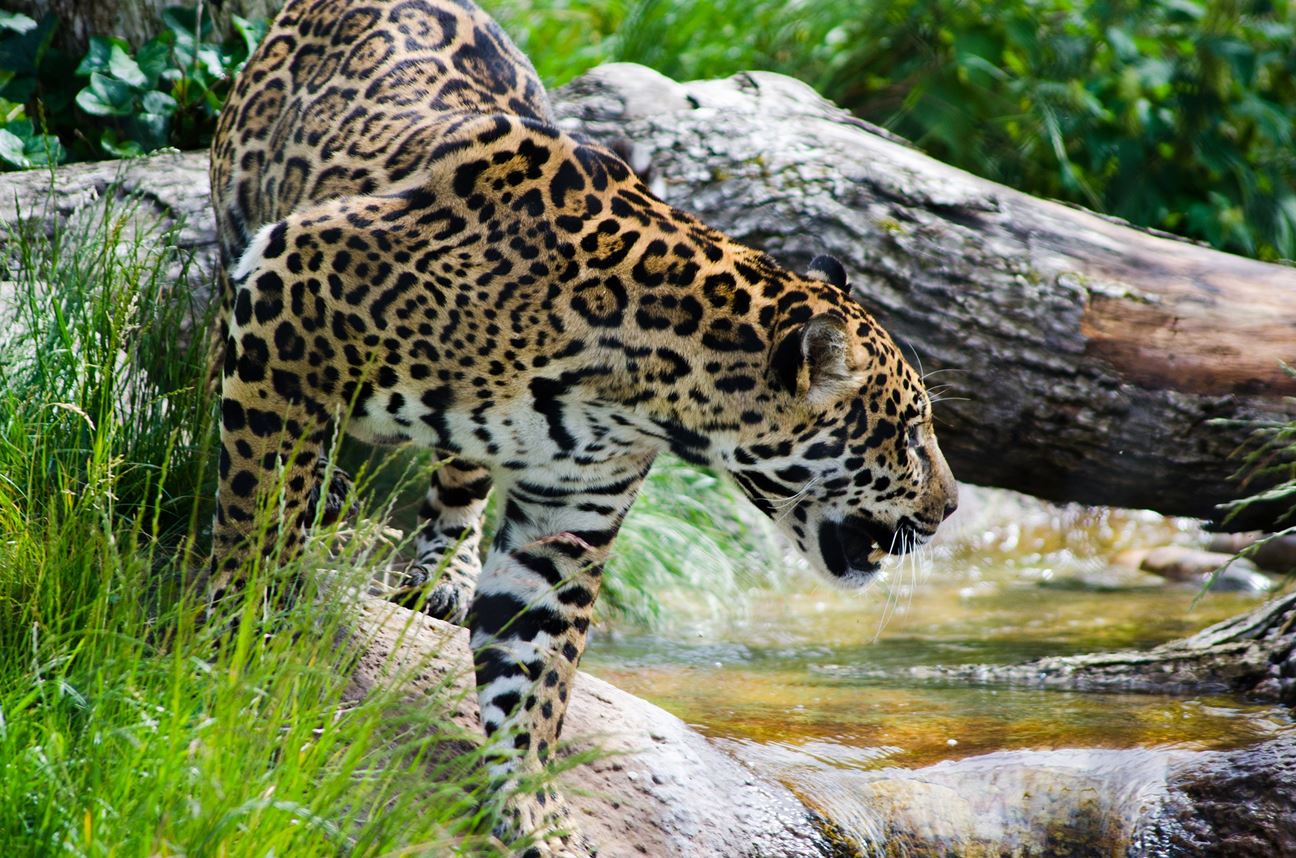 A jaguar near water
A jaguar near water
Leopards reach their highest speed in just a few strides. Their agile bodies help them reach the speed between 55-60 km/hr in open grasslands! Jaguars are a bit slower at an average top speed of 50km/hr.
Jaguar v/s leopard killing style -
Leopards stalk their prey, often for distances greater than 10 meters, while crouching their bodies. A decrease in chase distance results in a successful kill. In case of a larger prey, they asphyxiate by a muzzle hold or biting through the throat. In case of smaller prey, leopards kill by crushing the skull or the neck.
Jaguars, on the other hand, almost always go for larger prey using the classic stalk and ambush strategy. Larger cats use canine pierce to make a kill. There are reports of jaguars using their tail to attract fish to the surface while hunting near water.
Population and Conservation -
Leopards fall into the ‘vulnerable’ category, while the Jaguars fall into the ‘near threatened’ category on the IUCN Red List. While the human-driven threats are more prominent, both the species have shown a considerable decline in population.
Are Black Panthers Leopards or Jaguars?
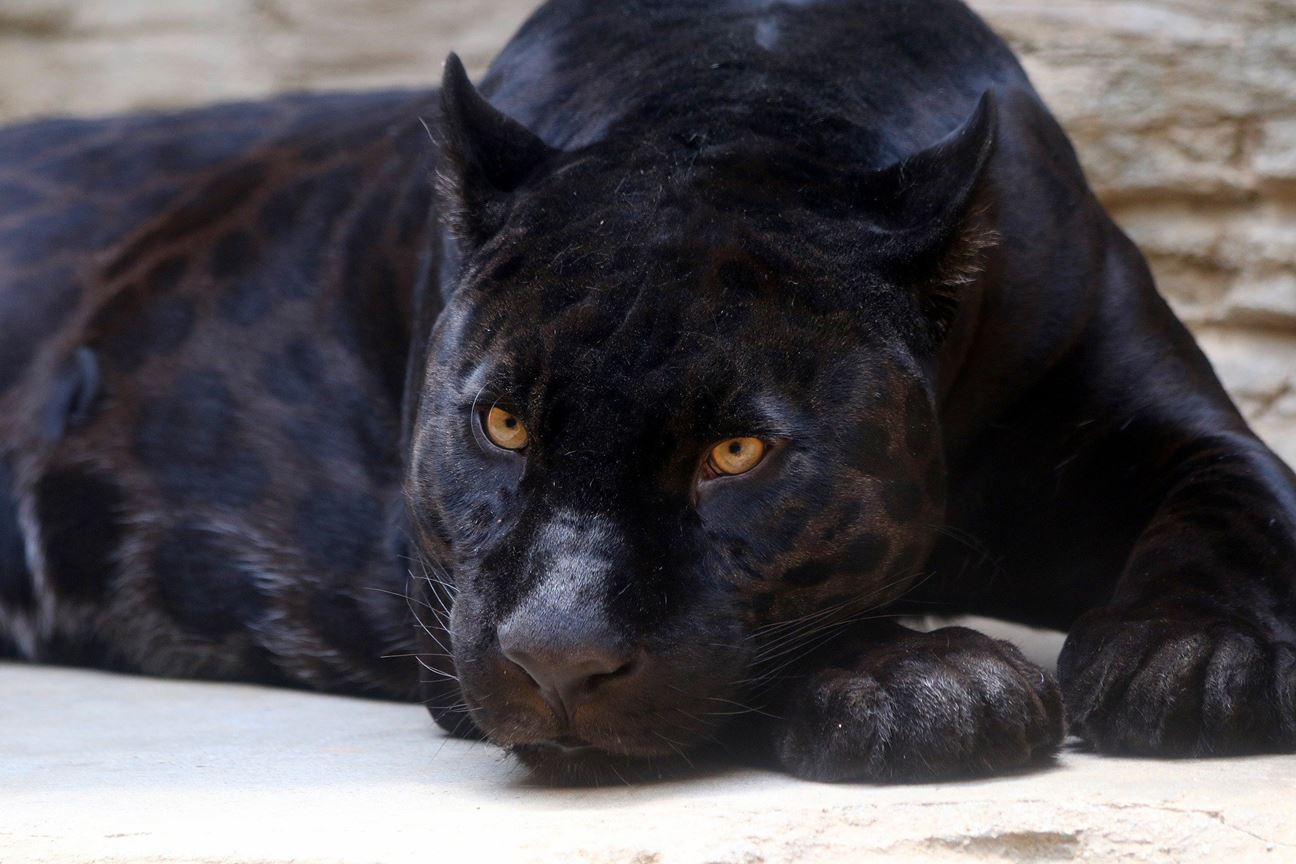 a black panther
a black panther
Technically, they can be either. But that’s mainly because of the semantics. Their black fur is caused due to melanism, a phenomenon that can be either hereditary or caused by a genetic mutation. There is no cat called a Panther, it is just a black morph of either of these cats. Black Panthers found in Asia and Africa are the leopards, and the ones found in the Americas are the black jaguars.
To sum it up, both leopards and jaguars are magnificent big cats. If you have made it to the end of the article, you will never have to worry about which cat you are looking at while in the wild!